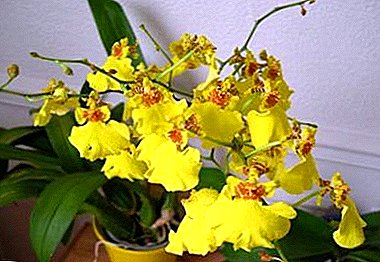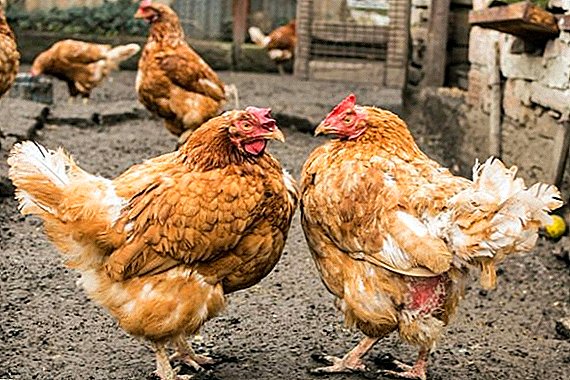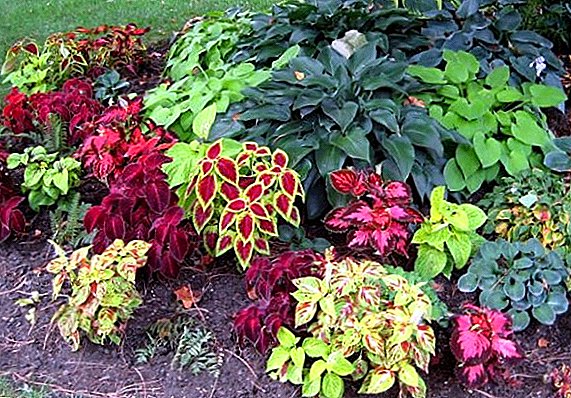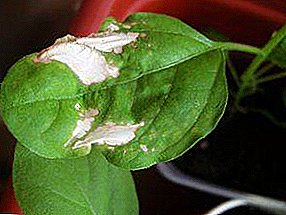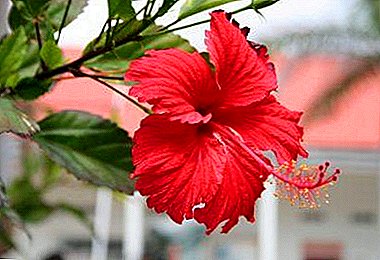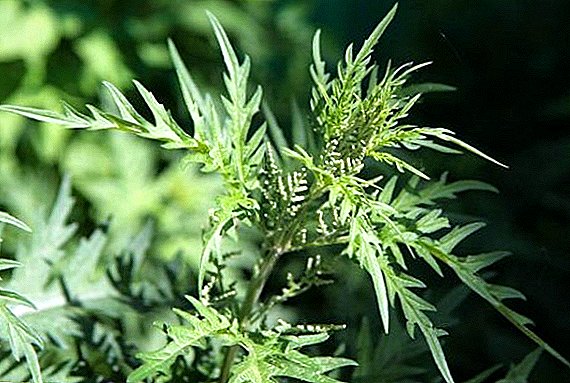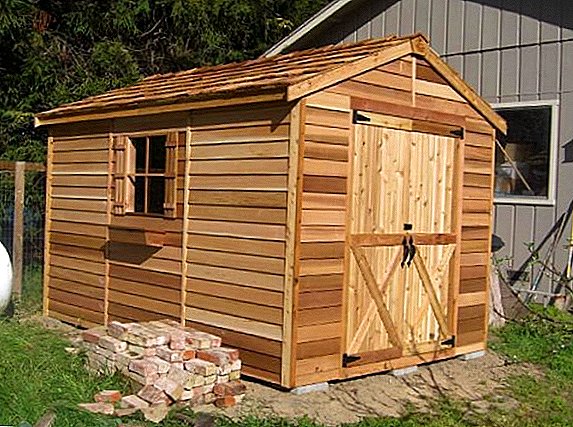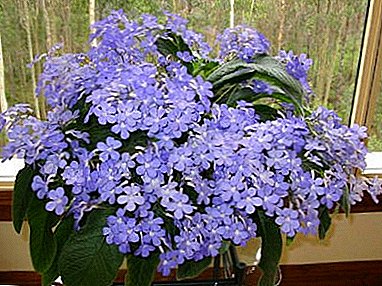
Today streptokarpus very popular among gardeners, thanks to the ease of maintenance and attractive appearance. However, even in this seeming simplicity it is necessary to observe a number of conditions in order for the flower to grow healthy and delight the eye with its bright colors and fascinating leaves. The article will look at how to properly care for the plant, as well as learn the subtleties and nuances of reproduction and cultivation of streptocarpus.
Description
Streptokarpus is a perennial herb of the Gesneriyev family. A feature of the plant is the shape of the fruit, having the form of a spiral-bent seed box.
The leaves are wrinkled, elongated, they form a rosette from which shoots grow. Flowers streptokarpus can be terry, semi-double and simple, a variety of colors. Their size varies from 2 to 9 cm in diameter. The smaller the size of the flowers, the more of them on the flower stalk. Petals have a different shape and wavy or rounded edges.
Streptocarpus bloom from spring to autumn, and in the presence of high-quality lighting, they are able to please with their flowers all year round.
A photo
Look at the photo of the flower.





Care and cultivation at home
Then read how to grow a plant and how to properly care for it.
Soil and fertilizers
Streptokarpus needs a loose, moisture-permeable soil with good aeration. You can use ready-made soil for violets by adding perlite and peat to it, or you can cook it yourself according to one of the recipes by mixing:
- 2 parts of deciduous land and 1 part of peat and stove;
- equal parts of peat, perlite, sphagnum moss;
- equal shares of hardwood humus, bark, peat and sand;
- peat and vermukit in equal proportions.
Add crushed charcoal to self-prepared soil mixture to prevent rotting of the roots.
Important! Any soil - purchased or prepared by yourself - must be well ignited to get rid of possible infections and microorganisms in it.
In the spring and autumn period, it is necessary to make liquid complex fertilizers every 7-10 days. for indoor flowering plants. Fertilizers consisting of equal parts of phosphorus and nitrogen are suitable for young plants, and adults for phosphorus and potassium.
Can be used as fertilizer folk remedies, for example, 1 tbsp. spoon of sugar, dissolved in 0.5 liters. water (make 1 time per month) or 1 tsp of castor oil to 1 liter. water (use when the buds are tied), or purchased in finished form ("New ideal", "Fialochka", "Kemira-luxury"). In winter, the plant does not need to fertilize. In order to avoid burns of the root system, fertilizer should be applied only in wet soil.
Watering
 Water for irrigation should be soft, defended or thawed, room temperature.
Water for irrigation should be soft, defended or thawed, room temperature.
If streptokarpus not long to water, its flowers wilted, and the leaves will lose elasticity. In this case, the flower does not tolerate excessive moisture, this leads to rotting of the roots. Water the plant should be moderately, as the drying of the middle layer of soil in the pot.
There are several ways to water a flower:
- in the pallet;
- on the edge of the pot;
- using a wick.
Important! During watering it is necessary to exclude the possibility of water on the leaves.
Humidity
Low air humidity is bad for flower development. Most optimal indicators of the humidity level of the room - 50-70%. Containers with water and regular spraying help them to support them.
It is necessary to spray only the space around the plant, avoiding dropping of water on the parts of the plant that are above the ground, otherwise there may be spots on the leaves, disease and rot.
Temperature
The flower feels comfortable in the summer when the air temperature is + 20-25 degrees, if it rises, it is necessary to increase the humidity of the air. In the cold season it is necessary to maintain the temperature at + 15-18 degrees for ordinary varieties and + 18-20 degrees for hybrid varieties. The minimum allowable temperature indicator - 15 degrees of heat.
It is necessary to protect the plant from drafts that are harmful to it., do not take the flower to the street - he is comfortable in the indoor environment.
Pruning
Regular pruning, consisting in the removal of old leaves, which take power and nutrients from the plant, is carried out in order to obtain more peduncles.
Lighting
Streptocarpus - light-loving plants, which is suitable for both natural and artificial lighting. The most suitable place for a flower is the window sill of the east or west window, on the south window the plant should be shaded, protecting it from overheating. In winter, with a short daylight level, only the south window and additional lighting are suitable for streptokarpus.
When and how to transplant?
Streptokarpus differs advanced root system, quickly fill the entire volume of the pot, so the transplant is required annually, best of all - in February, before the beginning of the period of active growth.
Important! A newly acquired plant should be given several weeks to adapt, after which it is necessary to transplant, even if it blooms.
Taking into account the rapid development of the root system, during transplantation it is better to make a complete replacement of the soil.
 The transplant process:
The transplant process:
- pour drainage from expanded clay, pebbles or vermiculite to the bottom of the pot;
- from above pour the soil;
- carefully remove the flower from the old pot and clean the roots of the remnants of the earth;
- if necessary, you can divide the bush into several parts and remove all damaged parts by sprinkling the cut sections with an antiseptic;
- place the flower in a new container and sprinkle with soil so that the growing point and young leaves are above the surface;
- slightly compact the ground, excluding the presence of voids;
- within 1-2 weeks after transplantation to carry out the top watering, and then - the bottom.
The pot for a plant should be chosen wide and shallow, the material should be plastic. Each new container should be 1-3 cm larger than the previous one.
Growing and seating
For successful cultivation and planting of a plant it is necessary to observe several conditions:
- after purchase, wait 14 days and only after that replace the flower in a plastic pot;
- plant young shoots in shallow pots to obtain lush flowering and build green mass - the more points of growth at streptokarpus, the more there will be peduncles;
- young plants first grow green mass, and then bloom, therefore, the appeared flower stalks should be cut off;
- It is important to observe the humidity and temperature of the air suitable for the plant, to provide the necessary amount of light and moisture.
Seating babies streptokarpus:
- grown young shoots are separated from the parent plant and are seated separately;
- you do not need to immediately plant the baby immediately in a permanent pot, so the plant will immediately begin to increase the green mass and flowering will not occur;
- it is necessary to gradually move the streptocarpus from a smaller container to a larger one until it is time to plant in a permanent pot.
Seed propagation features
 Generative reproduction is a fairly simple process, but it requires the following tips:
Generative reproduction is a fairly simple process, but it requires the following tips:
- seeds should be sown on the surface of a moist soil consisting of perlite, crushed peat and vermiculite mixed in equal parts;
- planting material can be mixed with fine dry sand;
- when seeds are sown, they should be sprayed with water from a spray bottle;
- Cover the container with seedlings with plastic wrap or a bag and place in a warm and bright place;
- daily air the greenhouse to prevent condensation.
Shoots should appear after 12-14 days, After 2 sheets appear on them, a pick should be performed.. This will require a nutrient soil consisting of peat, crushed moss, leaf earth, vermiculite, perlite (ratio 3: 2: 2: 1: 1).
Flower diseases and their treatment
Most often streptokarpus is exposed to the following diseases:
- Sulfuric rot. The disease develops due to the long stay of the plant in dampness and at low temperatures. It is shown by a gray fluffy bloom on the leaves, in place of which holes appear over time. All affected areas of the leaf should be removed.
- Mealy dew. The disease is easy to determine by whitish bloom formed on flowers, young leaves and peduncles. Avoid the disease by using good ventilation of the air in the room.
The following pests are dangerous for the flower:
- Aphid. Small insects that have green or orange color and that feed on plants. These parasites multiply rapidly. Aphids provoke the appearance of excess moisture or, conversely, excessive dryness.
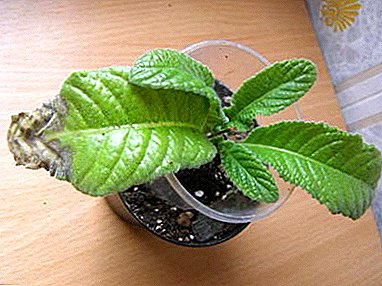 Mealybug. Colonies of pests form a white mass, to fight with them, as with aphids, is not easy.
Mealybug. Colonies of pests form a white mass, to fight with them, as with aphids, is not easy.- Weevil. Wingless insect with a black body and a sharp head, lays the larvae near the base of the stem. The pest eats the leaves of the plant, leading to its wilting and death.
- Front Scyriad. Pests crawl along the ground and eat thin young roots, thereby damaging the entire root system.
- Thrips. The size of the pest is 2 mm, it leaves pale spots on the flowers, provokes the falling of pollen. It is difficult to find them, they will be noticeable if you shake a flower on a sheet of paper.
When caring for streptokarpus, it is necessary to put enough effort to fulfill all the conditions necessary for the successful growth and development of the flower. However, they all pay off when the plant repays a grower with long, lush flowering and impeccable health.


 Mealybug. Colonies of pests form a white mass, to fight with them, as with aphids, is not easy.
Mealybug. Colonies of pests form a white mass, to fight with them, as with aphids, is not easy.